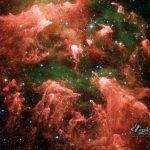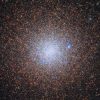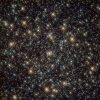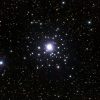A spherical star cluster has surprisingly few heavy elements0
- From Around the Web, Space
- October 17, 2020
Called RBC EXT8, the cluster challenges some theories of how galaxies form and evolve

Called RBC EXT8, the cluster challenges some theories of how galaxies form and evolve

The Milky Way’s core harbors two giants: the galaxy’s largest black hole and a cluster of tens of millions of stars around the black hole that is denser and more massive than any other star cluster in the galaxy.

This image from the NASA/ESA Hubble Space Telescope reveals a glistening and ancient globular cluster named NGC 3201 — a gathering of hundreds of thousands of stars bound together by gravity.

The constellation Canis Majoris, the ‘Big Dog’, is home to many fine open clusters of blue-white stars along the stubby Orion Arm of the Milky Way. There are some real gems here, including the modest but delightful open star cluster NGC 2362, a group that hosts some of the youngest-known stars. Centered on the bright star τ (tau) Canis Majoris, this cluster, in a telescope, looks like a large diamond set among many smaller blue-white gems.

Using recent advancements in Australian telescope technology, a Monash University-led research team has made an unexpected discovery that a large group of stars are dying prematurely, challenging our accepted view of stellar evolution.



